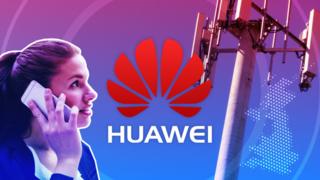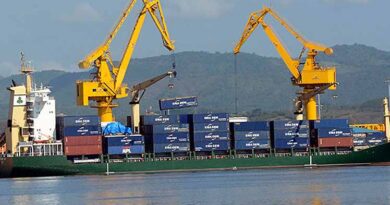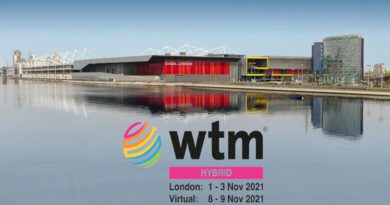Huawei 5G kit must be removed from UK by 2027

The UK’s mobile providers are being banned from buying new Huawei 5G equipment after 31 December, and they must also remove all the Chinese firm’s 5G kit from their networks by 2027.
Digital Secretary Oliver Dowden told the House of Commons of the decision.
It follows sanctions imposed by Washington, which claims the firm poses a national security threat – something Huawei denies.
Mr Dowden said the move would delay the country’s 5G rollout by a year.
He added that the cumulative cost of this, and earlier restrictions announced against Huawei earlier in the year, would be up to £2bn.
«This has not been an easy decision, but it is the right one for the UK telecoms networks, for our national security and our economy, both now and indeed in the long run,» he said.
Because the US sanctions only affect future equipment, the government does not believe there is a security justification for removing 2G, 3G and 4G equipment supplied by Huawei.
Huawei said the move was: «bad news for anyone in the UK with a mobile phone» and threatened to «move Britain into the digital slow lane, push up bills and deepen the digital divide».
New restrictions are also being applied to use of the company’s broadband kit.
The government wants operators to «transition away» from purchasing new Huawei equipment for use in the full-fibre network.
Mr Dowden said he expected this to happen within two years.
He explained that additional time was being provided for broadband to avoid the UK becoming dependent on Nokia as the single supplier of some equipment.
Chip concerns
The UK last reviewed Huawei’s role in its telecoms infrastructure in January, when it was decided to let the firm remain a supplier but introduced a cap on its market share.
But in May the US introduced new sanctions designed to disrupt Huawei’s ability to get its own chips manufactured.
This led security officials to conclude they could no longer assure the security of its products if the company had to start sourcing chips from third-parties for use in its equipment.
The minister cited a review carried out by GCHQ’s National Cyber Security Centre as being the motivation for the changes.
«Huawei claims to have stockpiles of parts that they can use, but this obviously affects what the NCSC can say about their products going forward,» blogged Dr Ian Levy, the agency’s technical director.
«We think that Huawei products that are adapted to cope with the [sanctions] are likely to suffer more security and reliability problems because of the massive engineering challenge ahead of them, and it will be harder for us to be confident in their use within our mitigation strategy.»
But other political considerations are also likely to have also come into play including the UK’s desire to strike a trade deal with the US, and growing tensions with China over its handling of the coronavirus outbreak and its treatment of Hong Kong.
Some backbench Tory MPs had pressed for a shorter time-span for its removal, in particular there had been calls for the 5G ban to come into effect before the next election in May 2024.
However, Mr Dowden said that «the shorter we make the timetable for removal, the greater the risk of actual disruption to mobile phone networks».
BT and Vodafone had warned that customers could face mobile blackouts if they were forced to remove all of Huawei’s 5G kit in less time.
Chairman resigns
Huawei says it employs about 1,600 people in the UK and claims to be one of Britain’s largest sources of investment from China.
The firm – whose shares are not publicly traded – does not provide a regional breakdown of its earnings. But on Monday, it announced a 13% rise in sales for the first half of 2020 compared to the same period in 2019, totalling 454bn yuan ($64.8bn; £51.3bn).
The UK will have accounted for a fraction of that. The firm’s UK chief recently noted that Huawei had only deployed a total of 20,000 base stations in the UK so far, but by contrast expects to deliver a total of 500,000 globally this year.
Even so, what the firm fears and Washington hopes is that other countries will now follow Westminster’s lead with bans of their own.
Despite there seeming little chance of a U-turn, Huawei said it was still urging UK ministers to reconsider.
«We will conduct a detailed review of what today’s announcement means for our business here and will work with the UK government to explain how we can continue to contribute to a better connected Britain,» spokesman Ed Brewster said.
Shortly before the announcement Sky News revealed that Lord Browne, Huawei’s UK chairman and the ex-chief executive of BP, would be leaving the Chinese company before his term had expired. It said he had given his notice a few days ago and would formally step down in September.
Lord Browne had led efforts to improve the company’s image in the UK and had tried to prevent a ban.
«He has been central to our commitment here dating back 20 years, and we thank him for his valuable contribution,» said Huawei, confirming the report.
Industry reaction
BT is set to be the telecoms operator most affected by the decision given it runs both the EE mobile network and Openreach, which provides fixed-line infrastructure to individual internet providers.
«We need to further analyse the details and implications of this decision before taking a view of potential costs and impacts,» it said.
The move should, however, benefit Nokia and Ericsson, which are the two other main 5G kit vendors.
«We have the capacity and expertise to replace all of the Huawei equipment in the UK’s networks at scale and speed… with minimal impact on the people using our customers’ networks,» said Nokia.
Ericsson added: «Today’s decision removes the uncertainty that was slowing down investment decisions around the deployment of 5G in the UK… and we stand ready to work with the UK operators to meet their timetable.»
However, both firms manufacture some of their 5G equipment in China, which has also caused concern in Washington.
In June, the US Department of Defense published a list of 20 companies it claimed had close ties to the Chinese military.
It included Panda Electronics – the firm with which Ericsson jointly runs a manufacturing facility in the Chinese city of Nanjing.
«A lot of companies assemble equipment or have some type of manufacturing in China,» Ericsson’s head of corporate communications Peter Olofsson told the BBC, when asked about this.
«Our trade compliance people have looked at this [list] and they concluded that it’s not something that has an impact on Ericsson or our operations.»
Huawei’s UK research bases
One consequence of shunning Huawei is that it might lead the company to rethink its research and development investments in the country.
The firm has sponsored work at several universities including Imperial College, London, Southampton and Surrey.
In addition, it operates research centres of its own employing a total of 400 people in:
- Edinburgh
- Bristol
- Cambridge
- Ipswich
The company also recently gained planning permission to build a new £1bn research centre at Sawston – a large village to the south of Cambridge. It has said the development would create hundreds of further jobs.
But one expert said the new restrictions might not mean the project will be abandoned.
«The research centre in Cambridge has been many years in the planning, and may well be its future sourcing of important technologies within the global supply chain, so Huawei might want to keep it if it is allowed,» said Emily Taylor from the Chatham House think tank.
Where is Huawei’s kit used in UK?
Mobile networks can be divided into two parts: the core and the radio access network (Ran).
The core is likened to the brain and carries out the most sensitive operations, including authenticating users’ identities and making sure calls get sent to the right radio tower to connect to another person’s phone.
The Ran includes the base stations and antennas used to provide a link between individual mobile devices and the core. Insiders sometimes describe this as the «innovative but dumb» part of the network.
BT’s EE mobile network features Huawei in the core of its 4G and 5G networks, but the firm is in the process of replacing it with Ericsson’s products, and has promised to do so by the end of 2023.
Otherwise, the UK’s main mobile providers only use Huawei in the Ran, and then always as part of a mix with at least one other vendor:
- EE to provide 2G, 4G and 5G
- Vodafone to provide 2G, 3G, 4G and 5G
- Three to provide 4G and 5G
- O2 to provide 5G at a relatively small number of sites in London, where it tested the equipment before opting to go with other suppliers elsewhere
Huawei also provides broadband equipment to BT’s Openreach division, which owns the infrastructure used by other internet service providers (ISP), including Plusnet, Sky and TalkTalk.
These days, the focus is on rolling out fibre-to-the-premises (FTTP) connections, which offer the fastest speeds and are key to delivering the government’s «gigabit for all» 2025 pledge.
In this case, Openreach uses Huawei’s kit at what it calls the «headend» – a gateway at local telephone exchanges that converts electrical signals to and from light-based ones, and makes sure each customer’s data is sent to the appropriate ISP.
Many people still get their internet via slower connections, which are routed via intermediary street cabinets.
About 70,000 of these cabinets contain Huawei’s kit, and the data also passes through more of the Chinese firm’s products at local exchanges.
Openreach does not, however, use Huawei’s equipment in its core.
Elsewhere, CityFibre – which runs its own smaller full-fibre networks – uses some Huawei gear as a legacy of an acquisition, but intends to strip it out by mid-2021.
Virgin Media does not use Huawei’s equipment within its broadband network.
But it does use it to provide telephone services, both for internet-based landline calls as well as to provide mobile phone subscriptions.
Other mobile virtual network operators (MVNOs) – including Sky Mobile and GiffGaff – also use Huawei’s gear.
It effectively sits between each MVNO and the mobile network whose infrastructure is used, and helps calculate customer bills, among other IT services.


